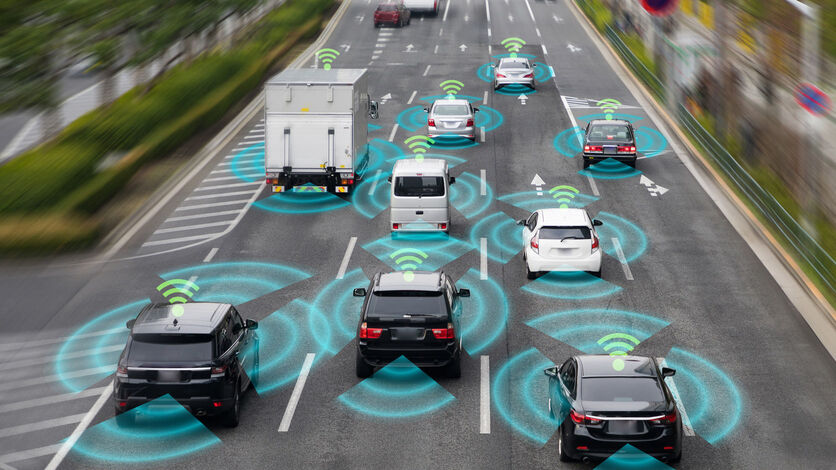The road to a driverless future is an exciting journey filled with technological advancements, safety improvements, and a reimagining of our daily commutes. In Texas, a state known for its wide-open roads and fast-paced cities, the arrival of autonomous vehicles brings both opportunities and challenges. This article will explore how driverless cars work, their benefits and challenges, and what the future might hold for Texas as it navigates this transformative technology.
What Are Autonomous Vehicles?
Autonomous vehicles, often called driverless cars, are cars that can drive themselves without human intervention. These cars use a combination of sensors, cameras, and artificial intelligence to navigate roads, avoid obstacles, and follow traffic laws. Imagine a car that can take you to the store or to a friend’s house without you having to touch the steering wheel or press the gas pedal. That’s what autonomous vehicles aim to achieve!
How Do Driverless Cars Work?
Driverless cars work by using a range of technologies to “see” and understand their surroundings. They are equipped with sensors like radar, lidar, and cameras that help them detect other vehicles, pedestrians, road signs, and lane markings. The data from these sensors is processed by a computer inside the car, which then makes decisions about how to drive safely. For example, if the car sees a red traffic light, it will know to stop. If it detects a pedestrian crossing the road, it will slow down or stop to avoid an accident.
The Benefits of Autonomous Vehicles
There are many benefits to having autonomous vehicles on the road. First, they can improve safety. Since driverless cars don’t get tired or distracted like human drivers, they might reduce the number of accidents caused by driver error. Second, they can help people who have difficulty driving, such as the elderly or people with disabilities, gain more independence. Third, they can reduce traffic congestion by communicating with other cars and optimizing routes. In Texas, where traffic congestion can be a big problem, these benefits could be especially valuable.You can also read How IoT is Changing the Way We Live in Texas.
The Challenges Ahead
While the road to a driverless future is full of promise, there are also many challenges to overcome. One major challenge is ensuring that autonomous vehicles are safe for everyone. This includes making sure the technology can handle all kinds of weather and road conditions. Another challenge is dealing with legal and ethical issues, such as determining who is responsible if an autonomous vehicle gets into an accident. In Texas, where driving habits can vary widely from city to city, these challenges might be even more complex.
The State of Autonomous Vehicles in Texas
Texas is a big and diverse state, and the adoption of autonomous vehicles is happening at different speeds in different areas. Major cities like Houston, Dallas, and Austin are at the forefront of testing and implementing this technology. In these cities, you might see driverless cars being used for ride-sharing services or delivery trucks navigating the streets.
Testing and Regulations
In Texas, companies are allowed to test autonomous vehicles on public roads, but they must follow certain regulations to ensure safety. For example, they need to have a safety driver in the car who can take control if needed. The Texas Department of Transportation (TxDOT) and other local agencies are working on creating guidelines and rules to manage the testing and deployment of driverless cars. This is important to make sure that the technology is safe and that it integrates well with existing traffic systems.
The Impact on Texas Roads
The introduction of driverless cars could have a big impact on Texas roads. In busy cities, autonomous vehicles could help reduce traffic jams by optimizing driving patterns and reducing the number of accidents. In rural areas, they could provide more transportation options for people who live far from public transit. However, there will also be challenges, such as updating road infrastructure to accommodate new technology and ensuring that all drivers are comfortable sharing the road with autonomous vehicles.
Looking Ahead: The Future of Autonomous Vehicles in Texas
As technology continues to advance, the road to a driverless future in Texas is likely to become smoother. Companies are constantly working on improving the technology and addressing the challenges. In the future, we might see more driverless cars on the road, improved regulations, and new transportation options. The key will be to ensure that the transition is done safely and that the benefits of autonomous vehicles are enjoyed by everyone.
The Role of Technology and Innovation
Technology and innovation will play a crucial role in shaping the future of autonomous vehicles in Texas. As new technologies are developed, they will make driverless cars even more capable and reliable. For example, advancements in artificial intelligence could improve the car’s ability to make decisions in complex driving situations. Innovations in communication technology might allow cars to talk to each other and work together to improve traffic flow.
Community and Industry Collaboration
Collaboration between communities, industry leaders, and government agencies will be essential for a successful transition to a driverless future. In Texas, local governments, businesses, and residents will need to work together to address the challenges and maximize the benefits of autonomous vehicles. Public education and outreach will also be important to help people understand and adapt to the new technology.
Conclusion
The road to a driverless future in Texas is an exciting and challenging journey. With advancements in technology, supportive regulations, and community collaboration, the state is well-positioned to embrace this transformative change. As autonomous vehicles become more common, they have the potential to make our roads safer, reduce traffic congestion, and provide more transportation options. While there are still hurdles to overcome, the future of driverless cars in Texas is bright and full of possibilities.





